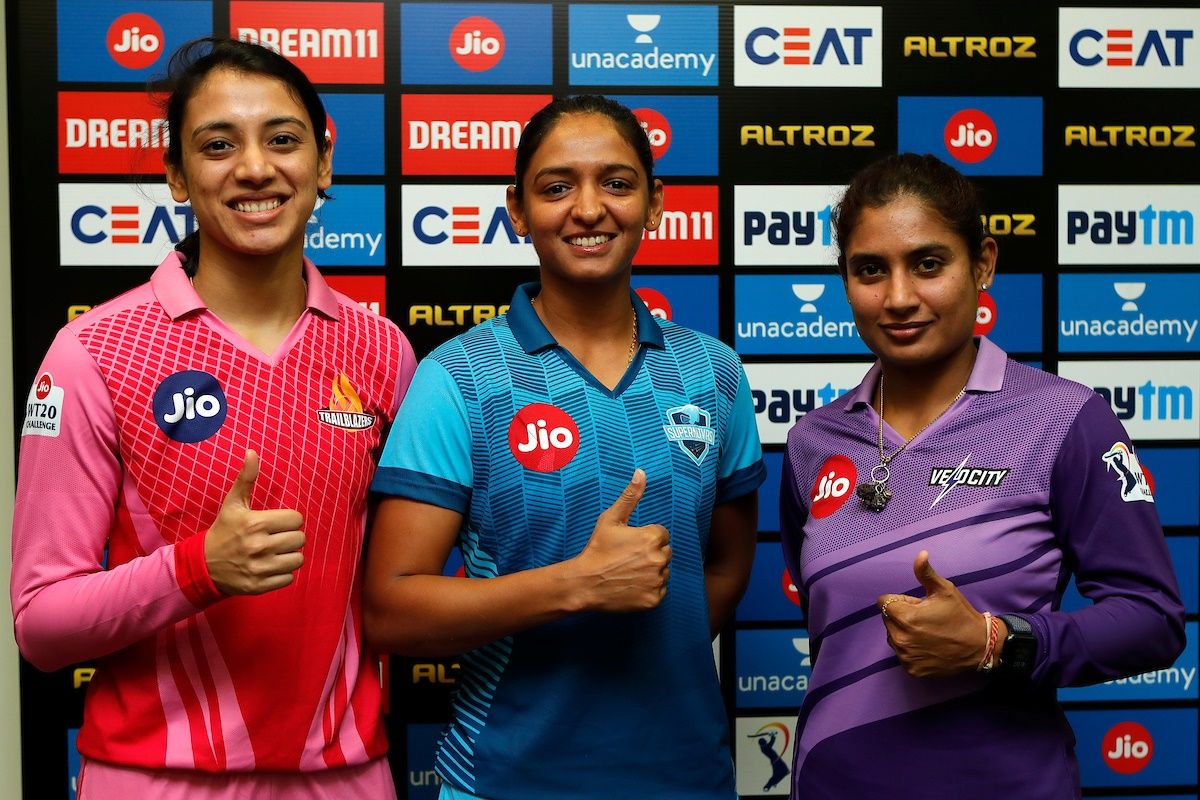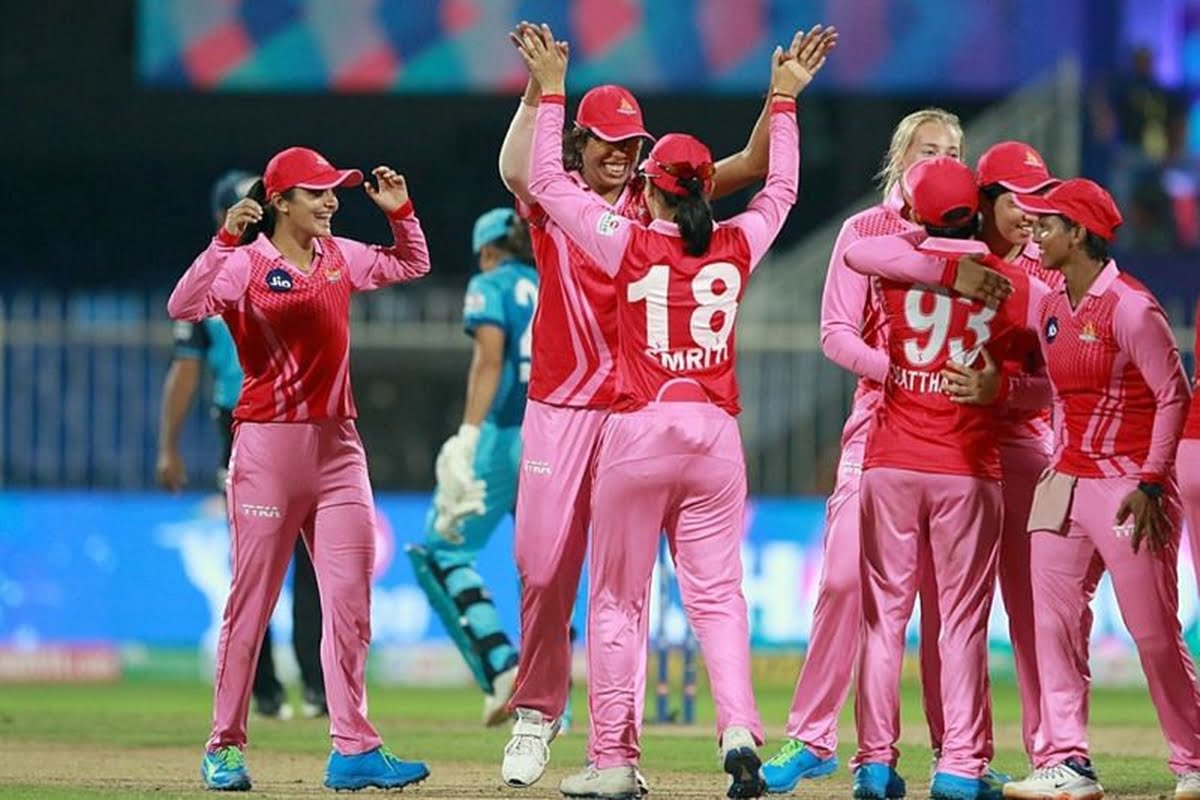As Mumbai Indians and Delhi Capitals play Indian Premier League (IPL) 2020 finals today, I could not help but notice the matches that were played on November 4, 5, 7 and 9. Oh, did you say there were no matches on these days? Well, the truth is the above mentioned dates were gaps for teams in the playoffs but more importantly, also the dates when the women cricket players played the IPL. Yes, there is an IPL for women.
November 4, 5, 7 and 9 were the gaps for IPL teams in the playoffs but more importantly, were also the dates when the women cricket players played the IPL. Yes, there is an IPL for women.
Three teams, four days: done and dusted. The IPL women’s tournament was held in Sharjah Cricket Stadium in the UAE.
That is the time allotted to complete a women’s tournament while the male players have had the time and chance to settle for sixty matches with eight teams competing for billions. Titled Women’s T20 Challenge 2020, the women cricket players’ IPL seemed like a formality that the Board of Control for Cricket in India (BCCI) wanted to get over with, just like Indian parents who cannot wait to get their daughters to complete basic education before marrying them off.
Also read: Navigating Spaces Of Sports As A Woman In College Campuses
The Women’s T20 Challenge 2020, or the women cricket players’ IPL seemed like a formality that the Board of Control for Cricket in India (BCCI) wanted to get over with, just like Indian parents who cannot wait to get their daughters to complete basic education before marrying them off.
The patriarchal structure of the Indian board is not new and does not change. Some would present the argument that at least something is happening but as one of the richest cricket boards in the world BCCI is not providing near enough equal opportunities for the women cricket players, who are instead left picking on the crumbs. In fact, there is a high chance that the event would have been cancelled if men’s tournament would not have happened because apparently women playing sports cannot be a stand alone event.
I remember going to the ground to play cricket in my colony and the bhaiyas (elder boys I’d try to play cricket with) would let me play an over and term me as kacchi goti and then send me out of the field and tell me that I am the fielder and I should get the ball. In retrospect, I cannot help but compare my situation to the condition of women’s cricket players’ team. The women were quarantined for almost a fortnight, played four days of hectic matches without proper breaks and were not given enough time but ample judgements, regarding the score.
One team, Velocity, played for two consecutive days– this is something that the men’s team would have never endured this schedule and in fact, would have demanded the sponsors to change the dates. But considering how we have dutifully conditioned women to always compromise and make do with the bare minimum of resources that we get. This reflects in the women cricket players’ IPL matches too.
Another thing that struck me as I analysed the stark differences in how women cricket players’ and men’s IPL matches are played, was the lack of sponsorship. There was only one sponsor, ie. Reliance Jio, as opposed to men’s cricket where the number of sponsors are so many that it is difficult to keep a count. In a nation obsessed with cricket we only want to see the men play and the women come in and fill the voids if they are lucky (on the no game days for men) in the name of ’empowerment’ and representation.
In recent times there has been a step in the right direction with terms such as “batters” instead of “batsmen” being used. Yet, if someone was to utter the word ‘cricketer’, how many of us would have the picture of women cricket players in mind? The change in vocabulary, a tournament for the women cricket players etc. are positive signs, definitely, but unless it is leading somewhere and not merely a mirage to get the activists and media off the board’s backs, it is just not enough.
Also read: How Can Sports Be A More Inclusive Space? | #TheSportsEdit

The change in vocabulary, a tournament for the women cricket players etc. are positive signs, definitely, but unless it is leading somewhere and not merely a mirage to get the activists and media off the board’s backs, it is just not enough.
It is very important to ask questions breaking the political, economic, social and political stigma related to women in sports. The poor resource allocation for female athletes, glorification of a few sport stars to generalise the condition of female athletes should be replaced with normalising women’s participation in sports through opportunities, endorsements and rightful representation. It is 2020 already, if not now, then when?
Palak Sabherwal completed her Bachelors in Social Sciences from Tata Institute of Social Sciences, Hyderabad. She is interested in studying how the economic conditions and social conditions effect woman’s health. She is currently interning with Gauravi, a one stop center for women against violence. She is also pursuing post graduate diploma in women studies and medical law and ethics. She can be found on Instagram.
Featured Image Source: Cricket.Yahoo.net





This is a great observation… the word cricketer did invoke only a man in whites image in my head … i need better conditioning …
Please drop your sense of entitlement. We all know that there is a huge difference in the talent of both sexes. Australia’s women’s soccer team lost 7-0 to under 15 school boys (google it). Also, India’s women’s cricket captain said that pay difference is not discrimination since women are not able to pull crowds as large as men do.
Hello Undertaker
Your facts might be right but your understanding of structural inequalities isn’t . The difference is not in the talent but the platform and funding both sexes get ,especially in india . It is easy to say women do not pull a crowd because we haven’t normalised the idea of women in sports till date . You KNOW things you’ve been taught and conditioned to think . I did not know that there is a difference in talent . What I believe is you need to see beyond the shallow images you’ve known and drop the entitlement too look at a larger perspective .